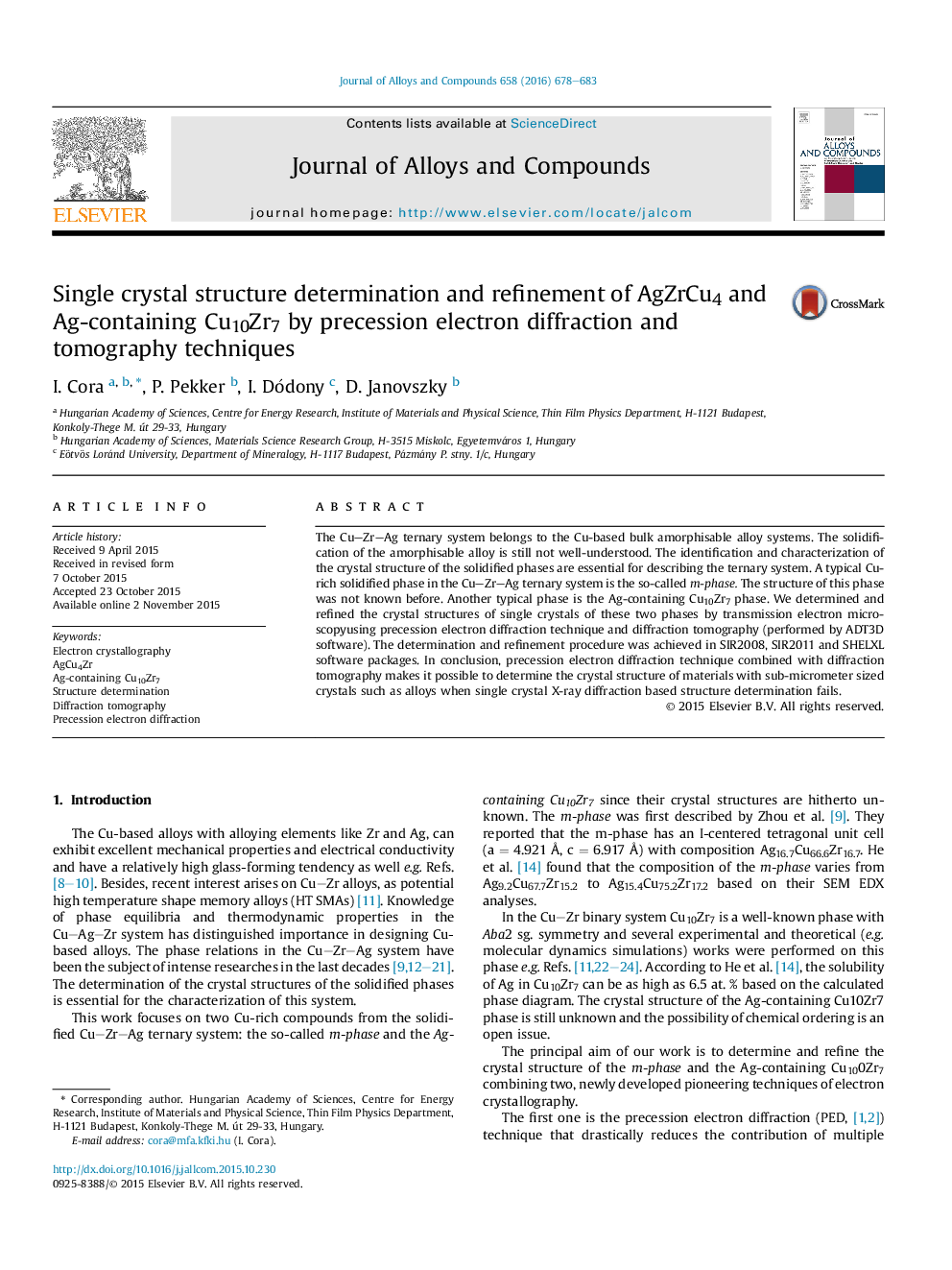| Article ID | Journal | Published Year | Pages | File Type |
|---|---|---|---|---|
| 1607482 | Journal of Alloys and Compounds | 2016 | 6 Pages |
•We successfully applied PED and electron diffraction tomography techniques on alloys.•AgCu4Zr – m-phase – has an ABCu4-type structure with acentric F-43m s.g. symmetry.•Ag substitutes Cu in the crystal structure of Cu10Zr7.•Ag ordering is resulted in a pseudo-orthorhombic triclinic A1 space group.
The Cu–Zr–Ag ternary system belongs to the Cu-based bulk amorphisable alloy systems. The solidification of the amorphisable alloy is still not well-understood. The identification and characterization of the crystal structure of the solidified phases are essential for describing the ternary system. A typical Cu-rich solidified phase in the Cu–Zr–Ag ternary system is the so-called m-phase. The structure of this phase was not known before. Another typical phase is the Ag-containing Cu10Zr7 phase. We determined and refined the crystal structures of single crystals of these two phases by transmission electron microscopyusing precession electron diffraction technique and diffraction tomography (performed by ADT3D software). The determination and refinement procedure was achieved in SIR2008, SIR2011 and SHELXL software packages. In conclusion, precession electron diffraction technique combined with diffraction tomography makes it possible to determine the crystal structure of materials with sub-micrometer sized crystals such as alloys when single crystal X-ray diffraction based structure determination fails.
Graphical abstractFigure optionsDownload full-size imageDownload as PowerPoint slide
